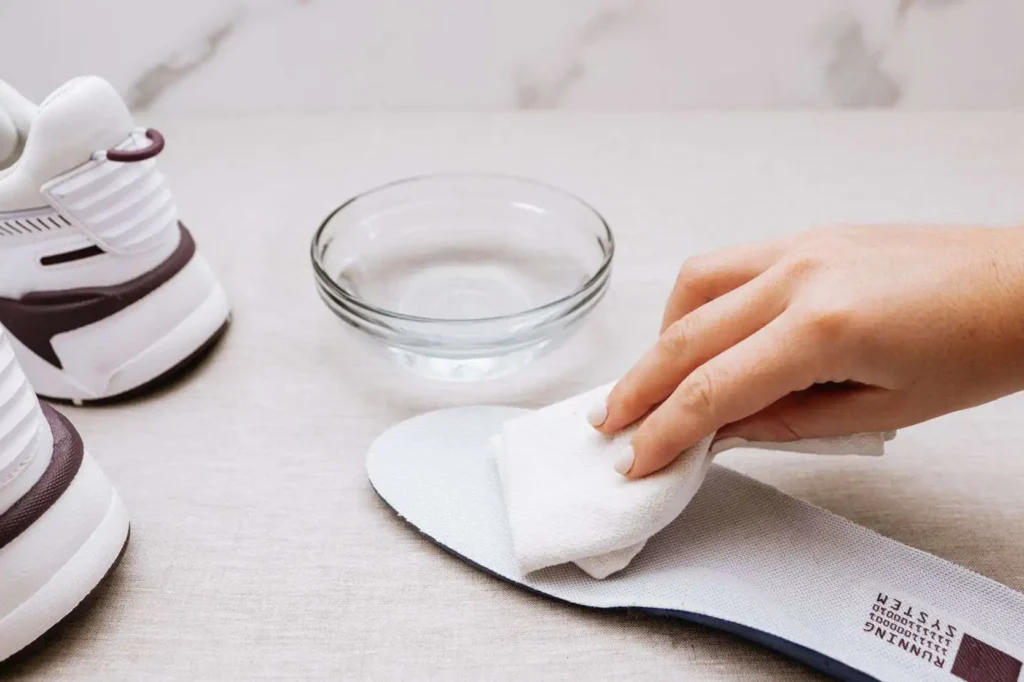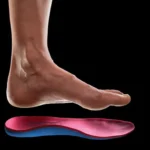Keep your feet healthy and odor-free with simple maintenance. Backed by personal experience and practical tips, this guide is your go-to resource for shoe insole care. Learn how to extend their lifespan and improve comfort without damaging them. Perfect for everyday and medical insoles alike.
Introduction to Can Shoe Insoles Be Washed:
If you’ve ever taken off your shoes and caught a whiff that made you do a double take, you’re not alone. Insoles absorb sweat, trap bacteria, and collect debris over time. Washing your shoe insoles is not only possible it’s essential for foot hygiene, extending the lifespan of your shoes, and keeping odors at bay. But it’s important to know the right way to wash insoles depending on what they’re made of.
As someone who’s worn and tested countless types of shoe insoles from memory foam and gel to high-end orthotics I’ve seen firsthand how a good cleaning routine can make a big difference. In this detailed guide, you’ll learn exactly how to clean different types of insoles safely, whether machine washing is a good idea, and tips to keep them fresh for the long run. Let’s walk through it step by step.
Every 2–4 weeks is ideal, or sooner if they smell or look dirty.
Which Types of Shoe Insoles Can Be Washed:
Not all insoles are created equal when it comes to washing. Foam insoles (like memory foam or standard EVA) can typically be washed gently by hand. Gel insoles and orthotic insoles require a little more care because of their structure and added support materials. If your insoles are labeled as removable and washable, you’re usually safe to clean them but always check the manufacturer’s instructions if they’re available.
Custom orthotics or insoles with electronic components (like heated insoles or ones with embedded sensors) should never be soaked or machine-washed. These require surface cleaning only. Understanding the material your insoles are made from is the first step in choosing the safest cleaning method.

How to Hand Wash Your Shoe Insoles Properly:
Hand washing is the safest and most effective way to clean most insoles. Here’s how. This method works well for foam and fabric-covered insoles. Don’t wring or twist them, as that can damage the shape and structure. Hand washing also helps preserve any antimicrobial treatments built into the material.
- Remove the insoles from your shoes and shake off any loose debris or dirt.
- Fill a bowl or sink with warm water and add a few drops of mild detergent or baking soda.
- Use a soft brush (like an old toothbrush) or cloth to gently scrub the surface of the insoles.
- Rinse thoroughly with clean water.
- Pat them dry with a towel and let them air dry completely ideally for 24 hours before reinserting them into your shoes.
Can You Machine Wash Shoe Insoles:
While it might be tempting to toss your insoles in with your laundry, machine washing is not recommended for most types. The agitation, water temperature, and spin cycles can cause them to lose shape, fall apart, or lose cushioning. However, some basic foam insoles may survive a gentle cycle if placed in a mesh laundry bag and washed in cold water but air drying is still a must.
Never put insoles in the dryer. High heat can warp the material and ruin them completely. If you’re unsure about machine washing, play it safe and stick to hand washing.
How Often Should You Clean Your Insoles:
For most people, cleaning your insoles once every 2–4 weeks is a good rule of thumb especially if you wear the same pair of shoes daily or sweat heavily. If your insoles develop a smell or visible stains sooner, go ahead and clean them earlier.
If you’re using orthotic insoles for foot conditions like plantar fasciitis or Sever’s disease, regular cleaning also helps preserve their function and hygiene. Keeping your insoles clean not only makes your shoes smell better but also reduces bacteria and fungus buildup, which can help prevent athlete’s foot and other issues.
Top 5 Best Insoles for Men’s Dress Shoes:
1. Superfeet Premium Dress Fit Insoles: These are my personal go-to. Designed specifically for men’s dress shoes, they offer exceptional arch support without adding bulk. The deep heel cup and biomechanical shape help with heel pain and plantar fasciitis. Plus, the ultra-thin design fits perfectly into leather-soled Oxfords or loafers without altering the fit.[https://amzn.to/43GjvDC]
2. Tread Labs Ramble Thin Insoles: Great for guys who need extra arch support and want a semi-rigid orthotic. They’re modular, so you can swap out the top cover. The low profile works well in narrow dress shoes. Best for all-day standing or walking.[https://amzn.to/4jvkWur]
3. Dr. Scholl’s Comfort & Energy Work Insoles (Trim to Fit): These are a more budget-friendly option. While not as durable as Superfeet or Tread Labs, they offer decent cushioning and can be trimmed to fit any dress shoe. Ideal for occasional formal wear.[https://amzn.to/4jBMOgF]
4. Vionic Active Orthotic Inserts: Known for podiatrist-designed footwear, Vionic offers great support for people with overpronation. These insoles feature a deep heel cup and firm yet flexible arch support. Slightly thicker, so best for shoes with removable insoles.[https://amzn.to/4mK4VDV]
5. PowerStep Pinnacle Dress Insoles: These insoles are specifically made for tighter dress shoes and offer a nice balance between support and cushioning. They’re often recommended by foot specialists for men dealing with heel or arch pain.[https://amzn.to/4kHt9wK]
Tips to Keep Insoles Fresh Longer:
Aside from regular cleaning, here are a few simple ways to extend the life of your insoles. Proper maintenance keeps both your insoles and your shoes performing at their best. Even high-end orthotics need TLC to keep supporting your feet the way they’re meant to.
- Alternate shoes daily to give insoles time to air out.
- Use foot powders or antiperspirant sprays to reduce moisture and odor.
- Store your shoes in a dry, ventilated area.
- Replace insoles every 6–12 months or as soon as they show wear, compression, or lose cushioning.
FAQ
Most frequent questions and answers
Not all insoles foam ones can be hand-washed, but custom or gel insoles may need gentler care.
Air dry them completely for 24 hours never use a dryer or direct heat.
Every 2–4 weeks is ideal, or sooner if they smell or look dirty.
Conclusion:
Regularly cleaning your insoles helps eliminate odors, extend their lifespan, and maintain foot hygiene. In summary, if you’ve ever wondered can shoe insoles be washed, the answer is a definite yes with the right care. Whether you use foam, gel, or orthotic insoles, following the correct washing method makes all the difference. Keep your feet fresh and your shoes lasting longer by making insole cleaning part of your routine. It’s a small effort that delivers big benefits for everyday comfort.





